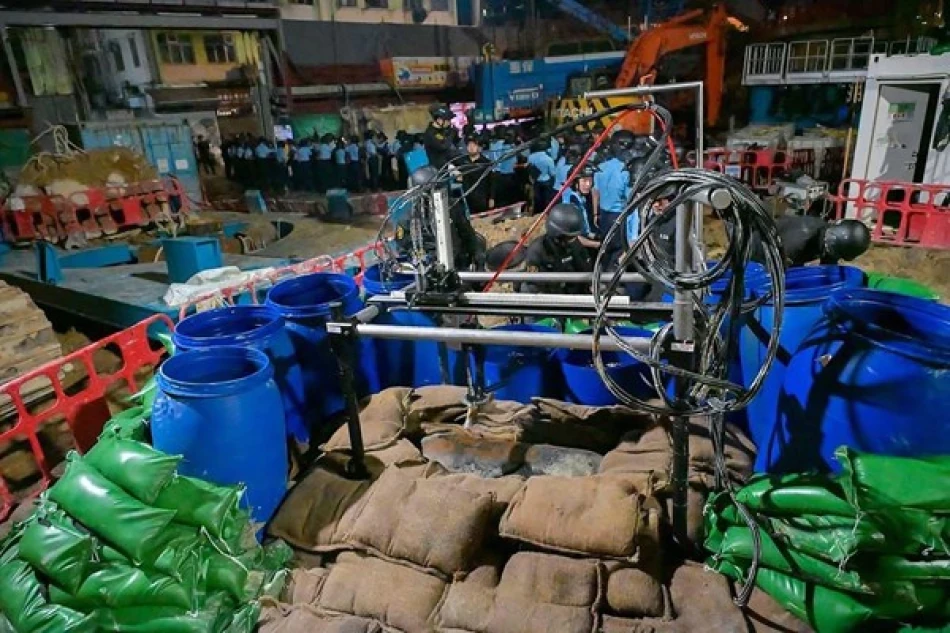
Thousands Evacuated as WWII Bomb Discovered in Hong Kong
Hong Kong Evacuates 6,000 Residents to Defuse Massive WWII Bomb in Commercial District
Hong Kong authorities successfully defused a 1,000-pound World War II-era bomb discovered at a construction site in the bustling Quarry Bay district, forcing the evacuation of 6,000 residents from their homes overnight. The operation highlights how wartime remnants continue to pose real risks in one of Asia's most densely populated financial centers, eight decades after the conflict ended.
Scale of the Emergency Response
The five-foot-long explosive device, weighing approximately 450 kilograms, was uncovered by construction workers in Quarry Bay, a vibrant residential and commercial area on the western side of Hong Kong Island. Police cordoned off the area and ordered the immediate evacuation of around 1,900 households.
"We confirmed that this object is a bomb dating back to World War II," Police Officer Andy Chan Tin-chu told journalists before the operation began. "Given the extremely high risks associated with disposing of it," he added, the mass evacuation became necessary.
A Routine Yet Dangerous Reality
The defusing operation began late Friday evening and concluded successfully around 11:30 AM Saturday, with no injuries reported. While dramatic, such discoveries occur periodically in Hong Kong, reflecting the territory's strategic importance during WWII and the intensity of bombing campaigns that targeted the region.
Historical Context of Hong Kong's War Legacy
Hong Kong endured Japanese occupation from 1941 to 1945, during which Allied forces conducted extensive bombing raids targeting military installations and infrastructure. The territory's rapid post-war development often proceeded over areas where unexploded ordnance remained buried, creating ongoing risks for construction projects.
Similar situations have emerged across former conflict zones worldwide. In Germany, authorities still discover and defuse an estimated 2,000 tons of unexploded WWII bombs annually, while London construction projects occasionally uncover wartime explosives. However, Hong Kong's unique challenge lies in its extreme population density—with over 7 million people packed into just 1,100 square kilometers.
Economic and Urban Planning Implications
For Hong Kong's construction industry, such discoveries represent both safety hazards and potential project delays. The territory's ongoing infrastructure development, including major housing projects and commercial developments, must account for the possibility of encountering wartime remnants.
The Quarry Bay incident underscores a broader urban planning challenge: how do modern megacities balance rapid development with historical safety risks? The successful evacuation and defusing operation demonstrates Hong Kong's emergency preparedness, but also highlights the hidden costs of wartime legacy on contemporary urban life.
Regional Perspective on Wartime Remnants
Hong Kong's situation mirrors challenges faced by other Asian financial centers with WWII histories. Singapore occasionally discovers unexploded ordnance during construction, while parts of the Philippines and Malaysia continue grappling with wartime explosive remnants. However, Hong Kong's status as a global financial hub means such incidents can have outsized economic implications if they disrupt business districts or major infrastructure.
The swift, professional response to this incident reinforces Hong Kong's reputation for crisis management—a crucial factor for international businesses and investors operating in the territory. While the discovery caused temporary disruption, the successful resolution without casualties demonstrates the effectiveness of established protocols for handling such emergencies.
Most Viewed News

 Layla Al Mansoori
Layla Al Mansoori






